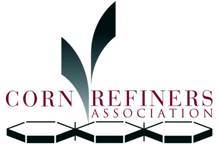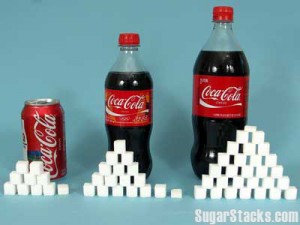I want to discuss an issue that has many people stirred up nowadays. I know there are many issues that moms will always disagree on; to vaccinate or not, breast feeding vs. bottle feeding, home school vs. public school, and most recently – the debate over High Fructose Corn Syrup. I just want to lay out the facts and let moms decide for themselves.
I know that nutrition is important and making healthy, nutritious meals is a priority for me. To be honest, I have never really checked the contents of my food to see if it has high fructose corn syrup or not. Until recently I never thought it was so bad. Then I kept hearing from every direction the severe dangers of feeding it to my family and I kind of panicked. When I was contacted by Mom Central to learn the facts of high fructose corn syrup I jumped at the offer. I thought they could give me the facts and pointers on how to avoid it totally…but I was wrong. Here’s the surprising facts:
High Fructose Corn Syrup vs. Sucrose (Table Sugar).
HFCS and Sucrose both contain half fructose and half glucose! The only difference is the chemical bond that is between the fructose and glucose in the sucrose. The bond doesn’t matter at all in the way either one is digested, since the bond breaks once the sucrose has entered the small intestine. They are digested in exactly the same way, and so they have the exact same effect on obesity.
High Fructose Corn Syrup has many uses.
(I think this is a cool fact!) There are two kinds of high fructose corn syrup – one that has 42% fructose and one has 55% fructose. The 42% formulation is actually less sweet than sugar. This type of HFCS is used in foods to produce a brown color, to retain moisture to delay staling, for microbial stability, helps build structure, provides texture, adjusts freezing points.
High Fructose Corn Syrup is what?
The name HFCS is a bit confusing so just think of it as corn sugar. Table sugar comes from sugar cane or sugar beets and HFCS comes from corn. Just like in nature, most all the common sweeteners are a mix of fructose and glucose. Most fruits and nuts fall into the 50% fructose/50% glucose range.
In conclusion, sucrose and HFCS are the same from a metabolic and nutritional stand point. The American Medical Association says there is nothing that links HFCS to obesity in humans. Many of the studies done lately give misinformation because HFCS is not being compared to sucrose and they are comparing pure fructose to pure glucose at high levels.
It’s my opinion that obesity is rising because we eat more of everything! With all things in life, balance is the key. Whether your sweetner is sugar, HFCS, honey, or another option remember to use it in moderation.
I hope this post was at least a little helpful. As women, it’s our privilege to provide healthy meals for our family and at times that means making tough decisions. I hope that I’ve been able to provide you with enough information to make an informed decision. To research this further visit SugarStacks.com & SweetSurprise.com.
Disclosure: “I wrote this review while participating in a blog tour campaign by Mom Central on behalf of the Corn Refiners Association. I received a gift certificate to thank me for taking the time to participate.”
















I really love it. thanks for the post.
God bless YOU.